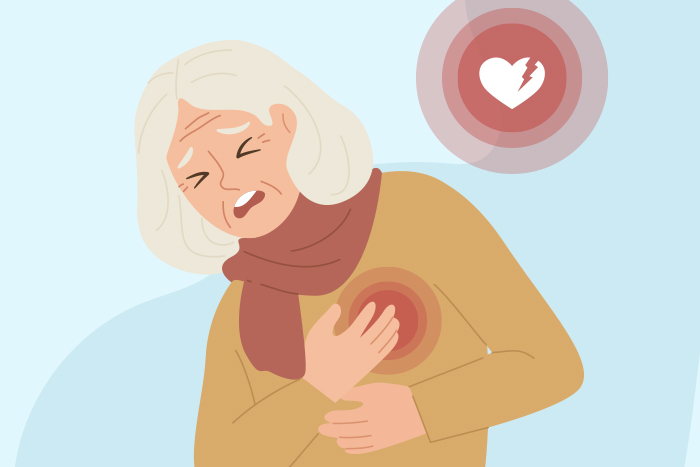Heart attacks and strokes are medical emergencies that happen suddenly, but they usually start with damage that builds up over time. When they strike, every second counts. Knowing what’s happening in your body and recognizing the signs could help you or someone you love get help fast.
In this article, we’ll walk through what actually happens during a heart attack or stroke, the warning signs to look out for, what to do in an emergency, and how you can lower your risk.
What happens during a heart attack?
Your heart needs a steady flow of oxygen-rich blood to keep beating. This blood is delivered by arteries. Over time, these arteries can get narrowed by plaque, a sticky buildup made of fat and cholesterol. When one of these arteries gets completely blocked, blood can’t reach part of your heart muscle. This is a heart attack.
Without oxygen, that part of the heart begins to die. The longer it goes untreated, the more damage it does.
Common Heart Attack Symptoms:
Chest pain or discomfort, often in the center or left side
Pain that spreads to the shoulders, neck, jaw, or arms
Shortness of breath
Nausea or lightheadedness
Cold sweat or unusual fatigue
For women, symptoms may be different and sometimes more subtle. In addition to chest pain, women are more likely to experience:
Unusual tiredness
Nausea or vomiting
Pain in the back, neck, or jaw
Dizziness or lightheadedness
Shortness of breath without chest pain
Women often wait longer to seek help because their symptoms don’t seem like a “classic” heart attack. But getting help quickly is just as urgent.
What is a stroke?
A stroke occurs when blood flow to the brain is interrupted, either by a blockage (ischemic stroke) or a burst blood vessel (hemorrhagic stroke). Without oxygen-rich blood, brain cells begin to die within minutes.
Stroke can affect movement, speech, and memory. Fast treatment can make a big difference in recovery.
Common Stroke Symptoms: Think FAST
To remember stroke symptoms, use the word FAST:
Face: One side of the face droops or feels numb
Arm: One arm feels weak or numb
Speech: Slurred speech or trouble speaking
Time: Call 911 immediately
Other symptoms may include sudden confusion, trouble seeing, dizziness, or a severe headache with no known cause.
What to Do in an Emergency
Call 911 if you or someone near you has signs of a heart attack or stroke. If you wear a medical alert device, press the emergency button to call for help right away—this can save time and make sure help is on the way fast.* Don’t wait or try to drive yourself to the hospital. Emergency responders can start life-saving treatment on the way.
While waiting for help:
Stay calm and seated
Chew an aspirin (if not allergic and advised by your doctor)
Unlock your door for paramedics
How to Lower Your Risk of Heart Problems
You can’t control everything, but there are many ways to lower your chances of having a heart attack or stroke:
Quit Smoking: Smoking damages your blood vessels and heart.
Eat Heart-Healthy Foods: Choose fruits, vegetables, whole grains, and lean proteins.
Stay Active: Even a short daily walk can help.
Keep Track of Your Numbers: Monitor blood pressure, cholesterol, and blood sugar.
Take Your Medications: Follow your doctor’s directions.
Get Regular Check-ups: Early detection can prevent serious problems.
Know Your Risk Factors
Certain things make heart problems more likely. These include:
Being over 65
Having high blood pressure or diabetes
Carrying extra weight
Family history of heart disease
Leading a sedentary lifestyle
Smoking or drinking too much alcohol
Talk to your doctor about your personal risk and what you can do to stay healthy.
Take Heart-Healthy Action Today
Heart attacks and strokes are scary, but knowing the signs and taking preventive steps can give you more control. Don’t wait for a wake-up call. Make small changes now, talk to your doctor, and share this information with loved ones.
Your heart and brain are too important to ignore. Stay informed, stay prepared, and stay healthy.
Sources:
Mayo Clinic: Heart disease
Cleveland Clinic: Heart disease
*Disclaimer: Healthcare Select may earn a commission if you purchase a product or service through links to our partners. This comes at no extra cost to you.

